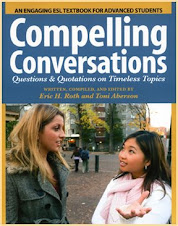“He who does not prevent a crime when he can, encourages it,” warned Seneca, a Roman philosopher almost two thousand years ago.
Guns, bombs, and murders in schools and shopping malls fill the headlines today. What is going on? How many more young people have to die because of the violent urges of psychopaths armed with guns, bombs, and hatred?
Look at some of today’s headlines and stories:
An undergraduate UC student is arrested, with two pipe-bombs, in Southern California. A frontpage L.A. Times article notes “The Homocide (murder!) Rates Rise in Los Angeles”. Another headline, in the letters section, reads “Local Gangsters Are Terrorists”. Two other letters to the editor discuss recent murders of young Americans raised in tough neighborhoods. In the last month, several mentally disturbed individuals have gone to their school, pulled out their gun, and brutally shot fellow students and strangers. How did these crazy people obtain guns? Where was security? What is going on at American school campuses?
Yet the violent madness in schools and shopping malls extends beyond just the United States borders. Today a gunman murdered at least 8 students and shot another 30 human beings at a Jewish seminary in Jerusalem. Religious hatred appears to have motivated the gunman, and deluded fanatic probably expected to go to paradise. Crowds in Gaza cheer. What is going on?
In a Baghdad shopping district, people went shopping and were enjoying the simple pleasures of daily life. Another religious fanatic changed their morning plans - and blew himself up and murdered several surrounding people. When horrified humans went to help the wounded and dying, a second man filled with hatred and wrapped in explosives decided to murder some more humans. All the victims were Iraqi, and probably Muslim. What is going on?
Why are so many people filled with so much hatred, violent fantasies, and armed with dangerous weapons? What is going on?
Schools and shopping centers should be safe places where people gather, smile, and enjoy life. In our public schools, universities, and ESL classrooms, we celebrate diversity and individuality. We share stories, exchange insights, and encourage each other. We see the positive possibilities. Respect, tolerance, and the search for more information and knowledge guide us.
The terrible headlines today emphasize how fragile our schools remain. Our classrooms, often seen as an oasis of safety and possibility in dangerous neighborhoods, no longer seem automatically safe. I want more security and more sanity in schools. I want stricter gun control laws in the United States. I also want less hatred, religious fanaticism, and violent bigotry in the world.
Why are so many guns, bombs, and psychopaths entering so many schools? What are we doing to prevent future school shootings, massacres, and funerals? Or are we turning away, pretending their is no problem, and encouraging more tragedies?
Ask more. Know more. Share more.
Create Compelling Conversations.
Visit www.compellingconversations.com





